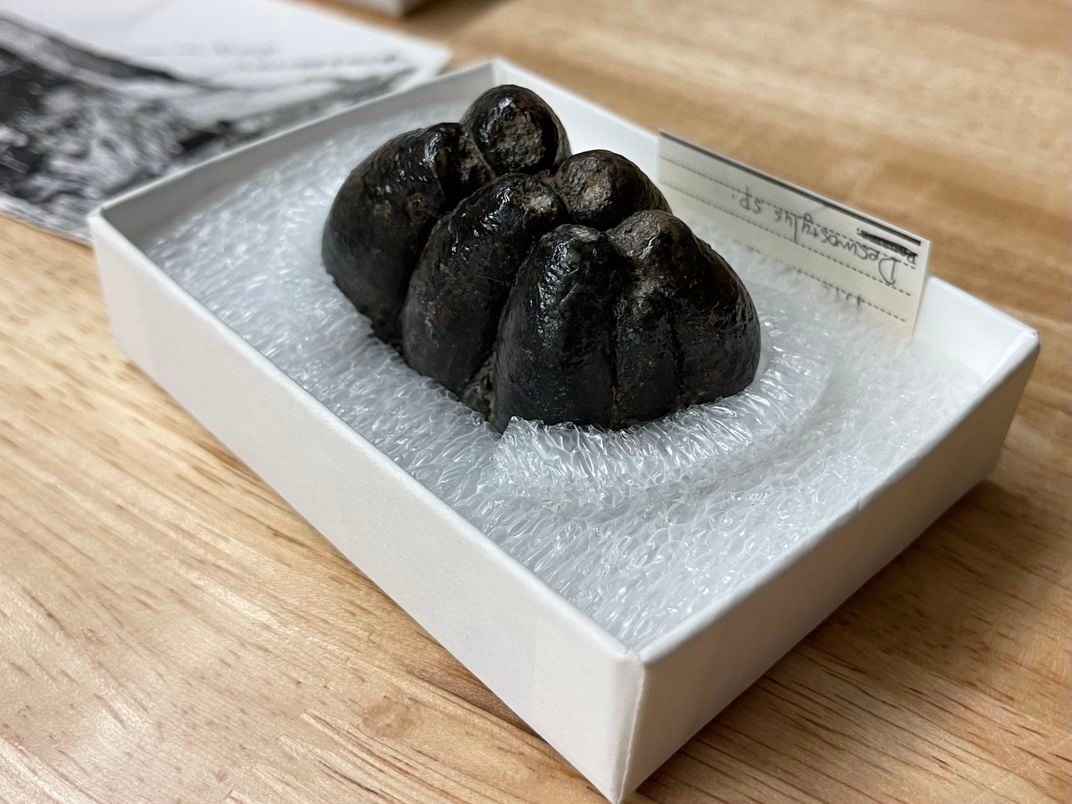Smithsonian researchers rediscovered a tooth from an ancient hippo-like marine mammal in the National Museum of Natural History’s collection.
Postdoctoral researcher Kumiko Matsui was looking through a cabinet in the museum’s paleobiology collection during the summer of 2021 when she came across a fossil tooth in one of the drawers that she knew belonged to a desmostylian, an extinct group of marine mammals that inhabited coastlines along the Pacific Rim.
But identifying the ‘Desmo’ species the tooth belonged to was more difficult. The fossil was originally discovered by Warren Addicott, a paleontologist at the U.S. Geological Survey, in 1965. To pinpoint the exact rock formation where Addicott uncovered the curious chomper, Matsui and Nicholas Pyenson, the museum’s curator of fossil marine mammals, examined archival museum records, including a faded, handwritten label and a sepia-tinted photograph of the dig site.
Matsui and Pyenson linked the tooth to Desmostylus, a species of desmostylian previously thought to originate much later in the Miocene. According to Matsui, the fossilized molar reveals that Desmostylus sported these specialized, column-like teeth that resemble a bundle of rods encased in thick enamel for more than 15 million years.
These aquatic herbivores did not chew or eat like any other known animal. To root up aquatic plants, they clenched their mouthful of oddly shaped molars together. The unusual structure of their mouths and strong muscles helped them suck in the food.
To see what desmostylia looked like, check out the artist’s rendering on the museum’s Ocean Portal website.

